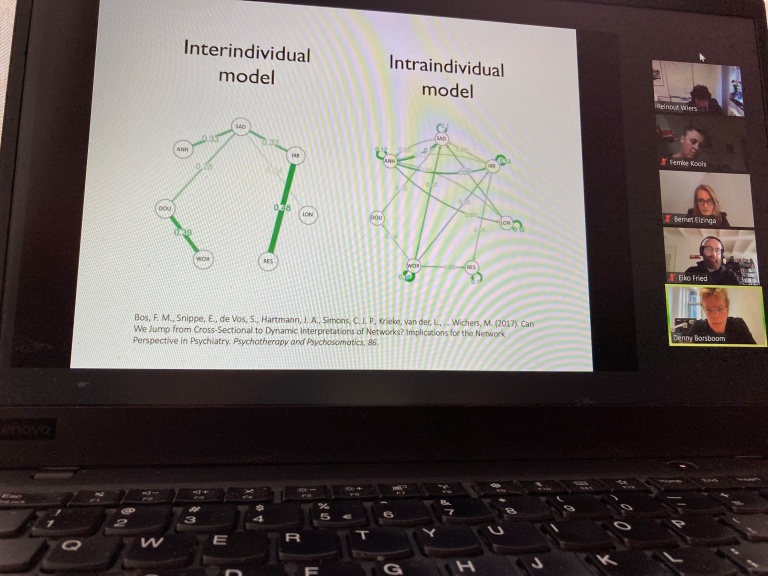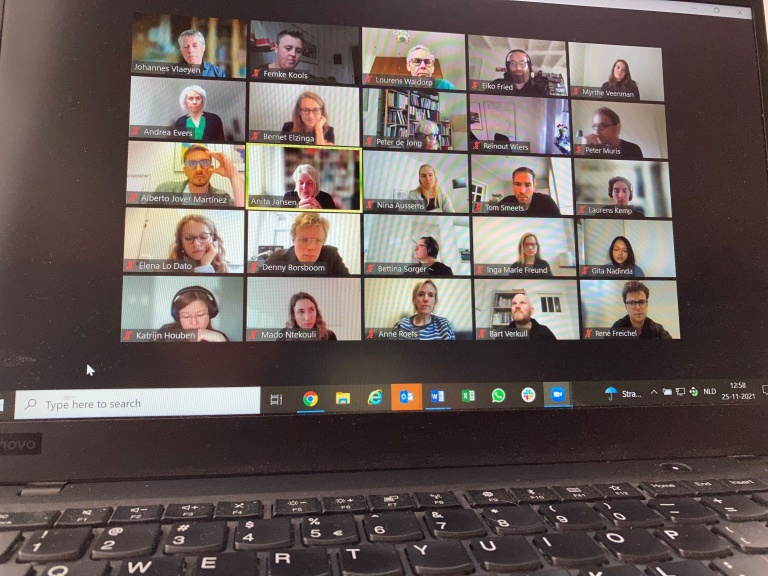NSMD’s third network meeting, where all participating researchers share knowledge to further the project, was again an online session on 25 November, due to the corona pandemic. Organisers Bernet Elzinga and Andrea Evers from Leiden University nonetheless managed to offer an inspiring two-hour programme. Talks by, for example, Denny Borsboom, gave ample food for thought.

The central theme of the meeting was ‘Aims, strengths and limitations of idiographic versus nomothetic models’, or in layman’s terms: the individualistic versus the group approach in research.
Consortium member Eiko Fried, associate professor at Leiden University, whose interest lies in studying individual symptoms of mental disorders and their causal relations, answered the question ‘How to best investigate the relation between A and B’. The answer on his final slide was clear: ‘It depends’. “Depending on the type of data you gather, there are different types of network models you can use”, was his main message, which he underpinned with several theoretical examples.
Knowing what time it is
Professor Denny Borsboom from University of Amsterdam (member of the NSMD Scientific Advisory Board and one of the founders of the network theory in psychopathology) held a plea for the combination of sources of information. “It is said that a person with one clock knows the time, while a person with two is never sure, because one source of information would be better than the other. I don’t see a conflict here. We cannot hope to get all information from one model or study.” According to Borsboom, combining several sources of information could lead to a ‘patchwork’-like model, just like the IPCC presents for climate change. “But it’s not easy”, he concluded. “Climate change is a joke compared to the complexity of a person’s psychology. But if something is impossible, you should always aim for it.”
And there was more
Johan Vlaeyen, professor of Health Psychology at Maastricht University and an expert in single-case experimental designs, gave a mini lecture on this type of study design: what is it exactly, why would you do it and how should you do it? After which PhD candidate Myrthe Veenman from NSMD-team Communicating Networks presented her findings so far on the mapping of emotional states in the context of families.
Although the questions after the talks (and as a matter of fact also the majority of the talks themselves) where just a tiny bit too complicated to reproduce for your humble layman’s reporter, they were highly appreciated by the scientists in the (virtual) room. And that’s what a network meeting is supposed to offer and is all about in the end.
